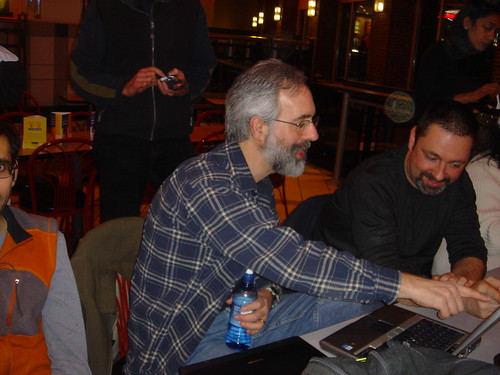Friday Links: June 23
 Blogging BloggingProblogger, a service trying to make some money helping people blog, has Darren Rowse's blogging advice this week in Business Blogging 101. Although oriented toward business blogs, the issues he tackles come up in non-profit blogging as well. I've a number of non-profit execs have told me they shy away from blogs because they fear people might use the on-line medium to make critical comments about their organization. Darren's response: I don’t have an easy answer for businesses thinking through the interactivity of blogging except to say that as user generated content becomes more and more prevalent that people will use the medium to talk about your company more and more whether you have a blog or not. My opinion is that rather than ignoring it, having a presence in the space at least shows your willingness to interact.Every week we see posts like Darren's, often called "10 tips for a better blog". Do they all say the same thing? Kami Huyes pointed us a while back to a survey of 80 posts on the subject. The three most commonly offered bits of advice were, unsurprisingly: Post regularly, build a community, and read other blogs. Kami offers some suggestions of her own - starting with "contributing original thinking". Sad that this needs to be said, isn't it? Internet Culture Speaking of "contributing original thinking", Nicholas Carr is afraid original thought may be a victim of the "cut and paste" culture spawned by the Internet. If you don't read his always provocative commentary in Rough Type, you should start; often running contrary to the millennial hype about web2.0 and the new net, Nick always urges us to be careful not to throw away what is culturally valuable in our enthusiasm for the new. The Semantic Web Just the other day I posted some information on Microformats for the first time. Later that same day Christine Herron wrote about a microformats initiative at Yahoo! and Marnie Webb pointed us to Piggy Bank, a Fireflox plug-in from MIT that scrapes semantic content from web pages. And in a comment to my Microformat's post, Francis Storr let us know about Tails, another Firefox plug-in that recognizes numerous microformats. I have a strong feeling The Semantic Web is a part of the Next Big Thing. Programming If you're a web developer eager to get your feet wet with the new Ajax techniques but not sure where to start, take a look at Ajax Hacks, by Bruce W. Perry. Built around very concrete examples like user-logins and credit card validation, you'll find a lot of reusable code in this book that makes the AJAX approach to building more responsive websites "just programming" -- to use a phrase from our office . And the source is all available for download from the book's website! (use the examples link on that page - it took me a minute to find it!). What can you do when you're branded? I seem to be getting into the habit of including at least one link I got turned on to via Jeff Brooks' Donor Power blog. If all the hype about branding your non-profit, and worse, personal branding, is starting to get to you, you'll feel vindicated by the article Obsessive Branding Disorder Jeff found on the FastCompany.Com site: Like Peter Pan, determined to stitch his own shadow to himself lest it get away, executives are obsessed with branding their companies.And now for something completely different I wonder what Nick Carr thinks about the cultural impact of this new technology? Tags: nptech |












